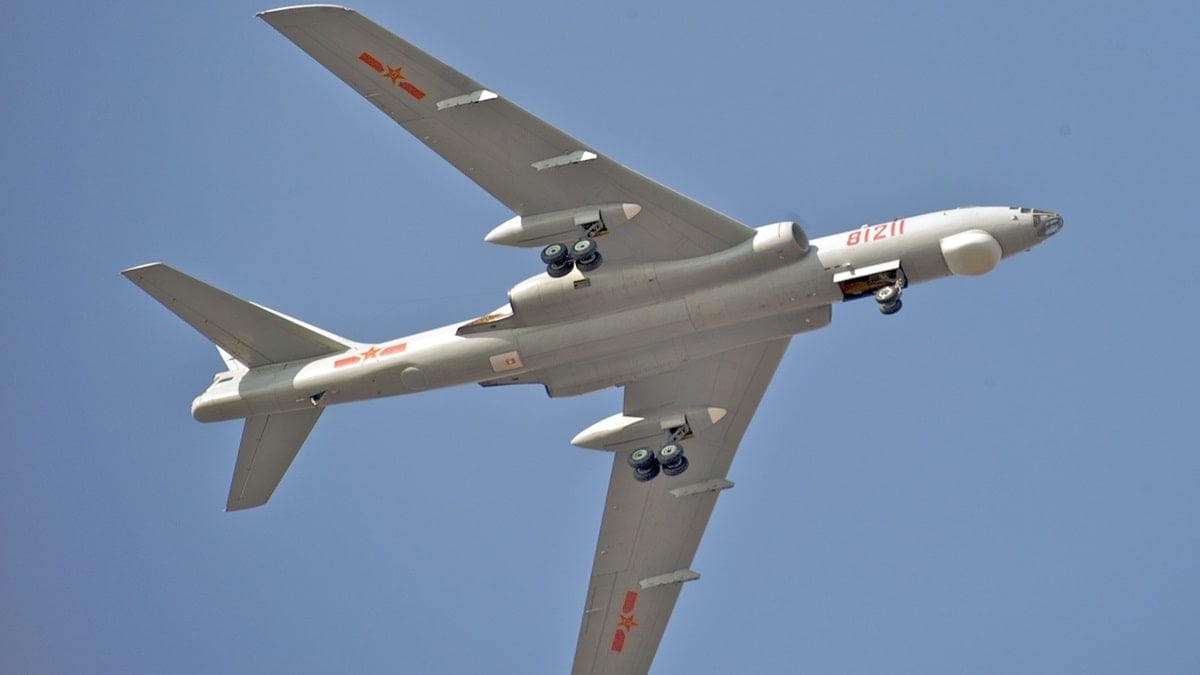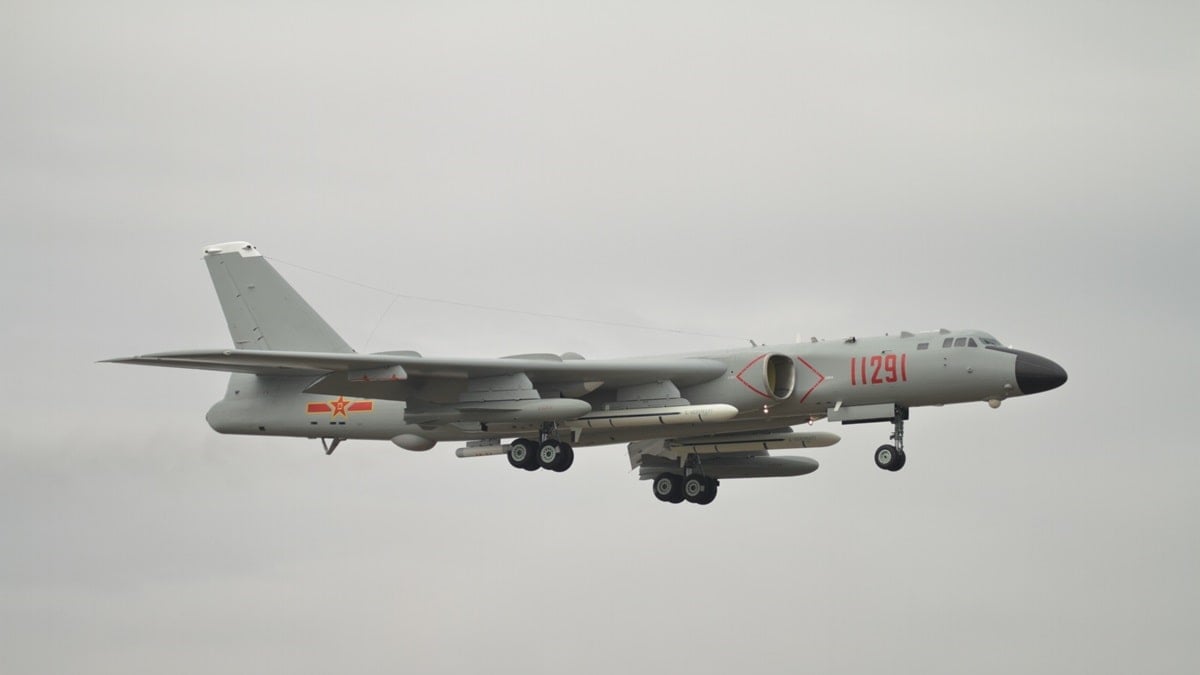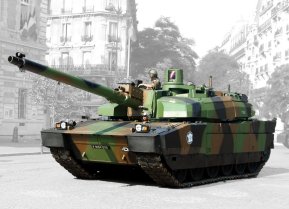H-6: The Old Chinese Bomber That Has Transformed Into a Missile Truck
Though an old platform, China's H-6 bomber remains viable and capable in the 21st century--and seems ready to attack any possible target.
Currently, only three nations operate true "bombers" – and that includes the United States, Russia, and China. While all three countries also are seeking to develop newer bombers, and the United States has the clear lead with its Northrop Grumman B-21 Raider, which took its maiden flight earlier this month, all three of the respective air forces continue to operate bombers that are far older than the crews flying them.
In the case of China, its Xi'an H-6 (Hong 6) has proven to be an old but reliable bomber – and more importantly, the People's Liberation Army Air Force (PLAAF) still has as many as 231 in service.
H-6: A Soviet Design
As with many of its military platforms that were produced during the Cold War, the H-6 wasn't actually developed domestically in China. Instead, the twin-engine jet bomber was a license-built version of the Soviet Tupolev Tu-16 (NATO reporting name Badger) – an aircraft that first entered service with the Soviet military in 1952.
It was one of the Soviet Union's earliest effective jet bombers, and more than 1,500 were produced through 1962.
The Tu-16 was significantly more advanced than the Tupolev Tu-4 (NATO reporting name Bull), a piston-engined strategic bomber that was a reverse-engineered copy of the American B-29 Superfortress. The new bomber featured a large swept wing and was powered by two large Mikulin AM-3 turbojets. It could carry a single FAB-9000 9,000 kg (20,000) bomb or various nuclear weapons. It had a range of around 4,800 km (3,000 miles).
The Soviet-designed Tu-16 remained in operation until 1993, while it was also exported to Egypt, Indonesia, and Iraq. In 1956, Moscow agreed to license production of the Tu-16 to Beijing, while it also supplied China with the first airframes in 1958.
Enter the H-6
The state-owned Xi'an Aircraft Industrial Corporation (XAC) was tasked with producing the bomber, while a team of Soviet technicians was even dispatched to China to assist in jumpstarting the program at Xi'an. The Chinese Bureau of Aircraft Industry selected the Harbin Aircraft Factory as well as a similar factory in Xi'an to produce the new bomber.

The first Chinese Tu-16, or "H-6" as it was designated in Chinese service, flew in 1959.
Bombing training of the H-6 was recorded by U.S. spy satellites on August 13, 1971, while the following year, the CIA estimated that China had 32 aircraft operational with an additional 19 awaiting completion. The H-6 was also employed to drop nine nuclear devices at the Lop Nur test site.
The H-6 in Chinese service was classified as a strategic bomber, initially intended to serve as a nuclear bomb deterrent, but that gave way to a more conventional bombing role following the development of other technologies, notably ballistic missiles that could be launched from land or by submarine. As a result, the nuclear delivery capabilities that the H-6 offered diminished in importance.
The CIA estimated in 1976 that the H-6 had moved over to a dual nuclear/conventional bombing role. However, in addition to the H-6 free-fall bomber, the "H-6A" nuclear bomber was built, while the PLAAF also employed the "H-6B" reconnaissance variant, the "H-6C" conventional bomber, and the "H-6E" nuclear bomber with improved countermeasures, while the "HY-6" series was modified to be capable of acting as an in-flight fuel tanker.
Anti-Ship Missile Carrier
Further development of the bomber also included the "H-6D" anti-ship missile carrier, which entered service in the early 1980s. It was designed to carry the C-601 anti-shipping missile (NATO codename "Silkworm"), an air-launched derivative of the Soviet P-15 Termit ("Styx") under each wing.

The H-6D was also equipped with numerous modernized systems including an enlarged radome with a Type 245 Kobalt I-band surveillance radar under the nose. The Type 245 radar was based on the Soviet PSBN-M-8 NATO codename Mushroom radar used on the Tupolev Tu-16. Earlier versions (Type 241, 242, and 244) were installed on the early models of the H-6. The H-6 has also been used as a tanker and drone launcher.
In total, approximately 150 H-6s in all configurations were built into the 1990s with production continuing long after it had even been retired by Moscow – as well as the other successor states that "inherited" the bombers following the dissolution of the Soviet Union at the end of the Cold War.
Production Resumed
While many of the older bombers were updated and enhanced – much as the U.S. Air Force has done with the Cold War-era B-52 Stratofortress – production of the H-6 resumed in the 1990s.
This included Xian building the "H-6G", which is a director for ground-launched cruise missiles; while the "H-6H" was introduced to carry two land-attack cruise missiles.
According to U.S. military reports, the latest version of the Chinese strategic bomber is the H-6N, a heavily redesigned version capable of aerial refueling and carrying air-launched cruise missiles. The U.S. Pentagon has warned that the aircraft could provide the PLAAF with a long-range standoff offensive air capability with precision-guided munitions including the indigenous-designed HN-1, HN-2, and HN-3, DH-10/CJ-10, and a variant of Russian-designed cruise missiles.
It is believed that the CJ-10 was chosen to be the main land-attack missile for H-6 bombers, and now the "H-6M" cruise missile carrier, which has four pylons for improved cruise missiles and is fitted with a terrain-following system.
Though an old platform, the H-6 remains a viable and capable bomber in the 21st century.
Author Experience and Expertise
Peter Suciu is a Michigan-based writer. He has contributed to more than four dozen magazines, newspapers, and websites with over 3,200 published pieces over a twenty-year career in journalism. He regularly writes about military hardware, firearms history, cybersecurity, politics, and international affairs. Peter is also a Contributing Writer for Forbes and Clearance Jobs. You can follow him on Twitter: @PeterSuciu.
All images are Creative Commons.


